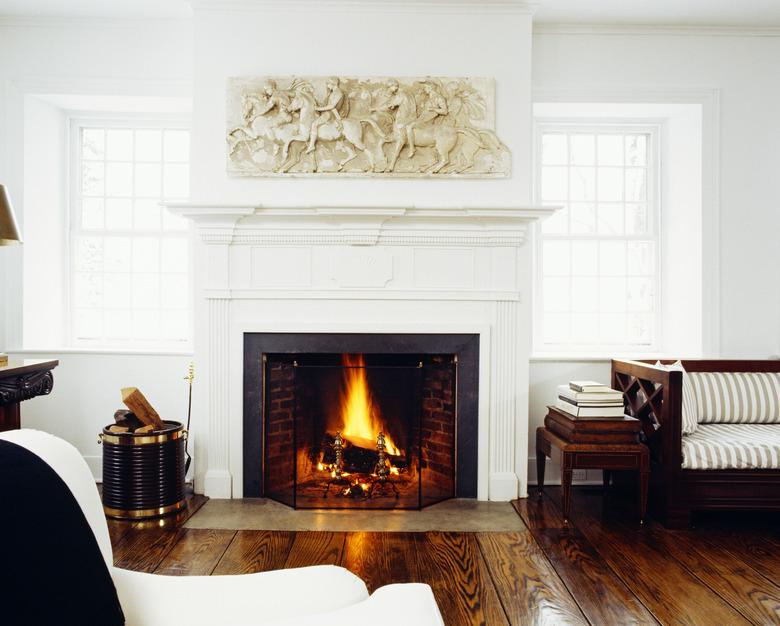How To Put Out A Fire In A Fireplace
We may receive a commission on purchases made from links.
There are things on which you need to have a handle before lighting a fire in your home, like whether everything is in working order, the best fuel to burn, and the best way to get it started. It's just as important to know how to put out a fire in your fireplace. A glowing fire that warms and creates atmosphere should be enjoyed worry-free, so learn how to do it right — all the way to the last dying ember.
Reasons for Killing a Fire
Reasons for Killing a Fire
You can always let a fire in your fireplace simply burn down as long as you're there to watch it. After all, it's satisfying to know none of the fuel you used was wasted. Sometimes, though, it becomes necessary to take steps to put out the fire completely, mainly because a fire should never be left unattended. If you're leaving the house unexpectedly or turning in for the night, put it out. It isn't difficult, but it is necessary.
Things Needed
How To Put Out a Fireplace Fire
1. Gently Spread the Fireplace Contents
Using your fireplace poker, begin to carefully spread out the embers and wood in the fireplace. You may have to work this step repeatedly if the fire is strong when you begin, but eventually, the fire will cool.
2. Work the Ashes
Use your fireplace shovel to begin covering wood and embers with ash as soon as you have ashes with which to work. Keep shoveling the ashes over the burning wood and embers until the fire is completely out.
3. Add Baking Soda
Once the fire appears to be totally extinguished, cover everything with a thin coating of baking soda to ensure that any remaining, undetected embers have been put out. Baking soda, or sodium bicarbonate, is often used in fire extinguishers because the carbon dioxide that's created when baking soda is heated works to smother fires.
4. Take Extra Precautions
Watch the contents of your fireplace for a few minutes. If you see indications that the fire is restarting, shovel the ashes over the wood and embers again and add more baking soda.
5. Deal With the Ashes
After the fire is out, wait a few hours before scooping up all the ashes for storage in a metal container. Ashes can take several days to cool. Put the container outside your house and away from anything flammable.
Don't Use Water
Don't Use Water
Although it's natural to think of dousing a fire with water, it's a bad idea when you need to extinguish a fire in your woodburning fireplace. It will create a tremendous amount of smoke along with a real possibility of steam burns and serious damage to the masonry in your fireplace. What's more, you'll be left with a real mess to clean up.
If you're dealing with an emergency, such as a chimney fire, it's best to use either a fire extinguisher or a Chimfex stick. Chimfex, when activated and placed next to the fire — not in it — replaces the oxygen in your fireplace and smothers the fire.
Fireplace Safety Tips
Fireplace Safety Tips
Using a fireplace involves more than firing it up and putting out the fire. Keep a checklist of tips handy to remind you about fireplace maintenance and safe use procedures.
- Have your fireplace and chimney inspected and cleaned annually.
- Keep debris and combustible materials away from the hearth.
- Make sure the flue is open before lighting a fire.
- Don't close the damper until the fire is out.
- Keep glass fireplace doors open when there's a fire going
and keep mesh screens closed. - Burn only dry wood or fire logs.
- Always crack a nearby window while a fire is burning to handle smoke that doesn't make it up the flue.
- Keep a fire extinguisher nearby.
- To prevent damage to the fireplace and risk of fire, don't burn a fire longer than five hours.
